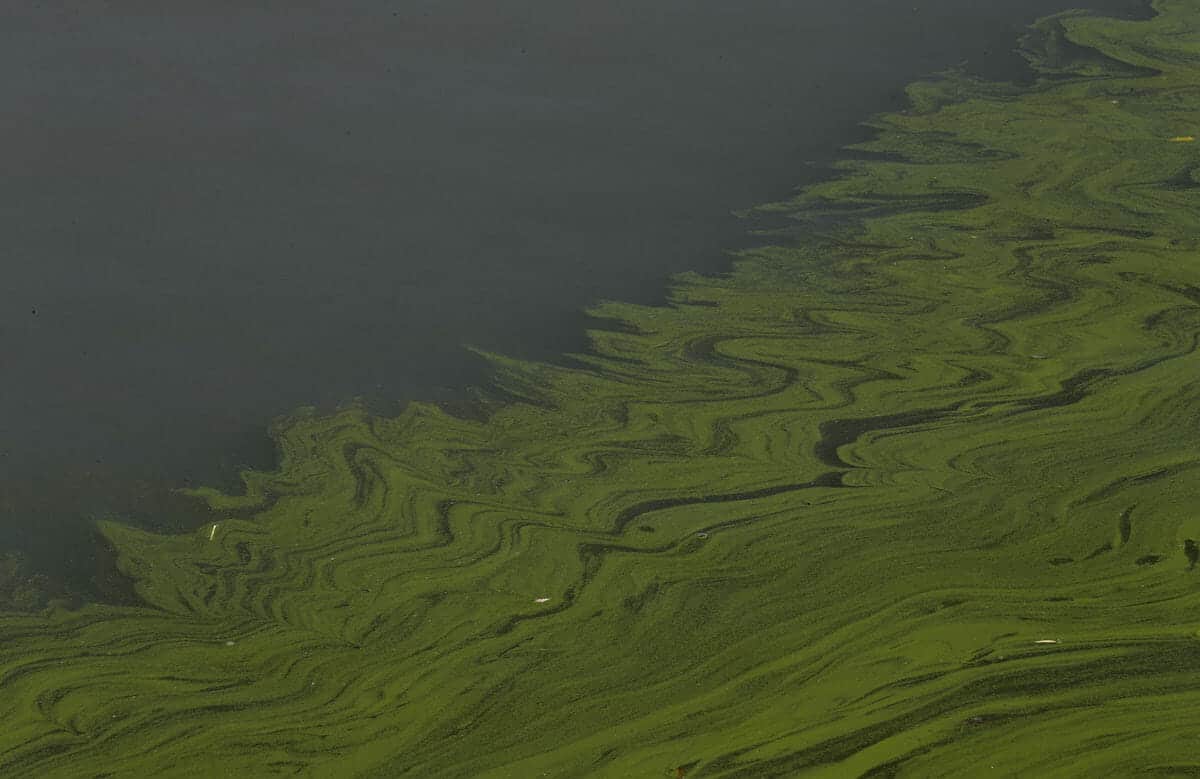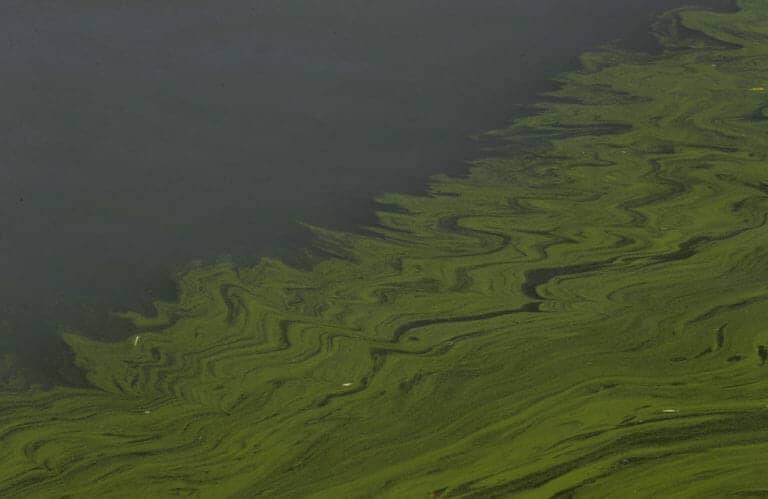Algae floats on the surface of Lake Erie’s Maumee Bay in Oregon, Ohio, on Friday, Sept. 15, 2017. Chemicals and manure intended to nourish crops are washing into lakes, streams and oceans, providing an endless buffet for algae. (AP Photo/Paul Sancya)
Harmful algae blooms have become a top water polluter, fueled by fertilizers washing into lakes, streams and oceans. Federal and state programs have spent billions of dollars on cost-sharing payments to farmers to help prevent nutrient runoff, yet the problem is worsening in many places.
Here’s a look at the algae menace and what’s being done: Among the oldest life forms, algae are simple aquatic plants that form key links in food chains. Some types of bacteria are also considered algae, including cyanobacteria, or "blue-green algae," which is increasingly common across the U.S.
Scientists believe a combination of factors can trigger large blooms, including warm temperatures, slow water circulation and excessive nutrients, especially nitrogen and phosphorus. Among nutrient sources are runoff from farms and urban lawns as well as industrial wastes and sewage. Some blooms generate toxins such as microcystin, which can cause nausea, fever and liver damage in humans and kill animals. A federal study detected microcystin […]
Full article: A look at farm runoff and the worsening algae plague
More about farm manure and fecal contamination of water supplies:
On-farm Treatment Options for Wastewater, Greywater and Fecal Sludge
The Science Is Clear: Dirty Farm Water Is Making Us Sick
Hurricane Florence breaches manure lagoon, coal ash pit in North Carolina
Factory Farms and Superstorms Don’t Mix
Farming activity contaminates water despite best practices



